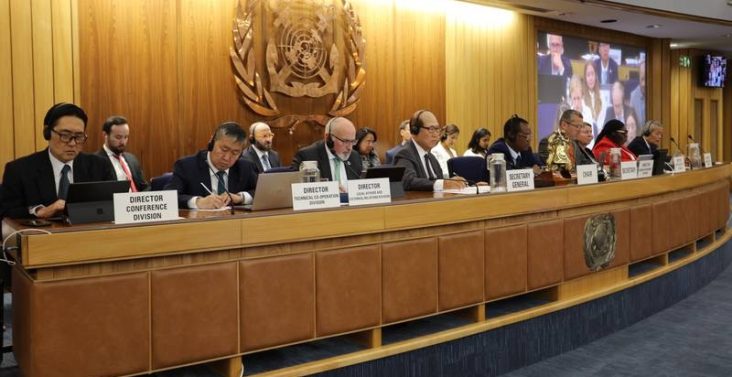The United States added a record amount of energy storage in the second quarter.
But I’ll forgive people in the industry for not being in the mood to celebrate.
The growth, while substantial, would have been much greater if not for the many delays brought on by parts shortages and other issues. Also, the growth was mainly in utility-scale storage, while there was a decrease in home-based projects.
Energy storage developers completed 1,680 megawatts of projects in the second quarter, the highest ever for a single quarter, and an increase of 21 percent from the second quarter last year, according to a report issued this week by Wood Mackenzie, a research firm, and the American Clean Power Association, a trade group.

But there were an additional 2,000 megawatts of projects that developers have pushed into later quarters and years, the report said.
The projects are running late for many reasons, including difficulty obtaining parts, long waits to get approvals to connect to the grid and the need to revise financing because of rising costs.
“It’s hard being a developer” amid the current challenges, said Vanessa Witte, a senior energy storage analyst for Wood Mackenzie and co-author of the report. “It is a very tough industry.”
Energy storage is a vital part of the transition to clean energy because it works well with intermittent resources like wind and solar power, storing electricity for use during times of high demand. To make a successful transition, the grid is going to need vast amounts of energy storage, which can include batteries and other technologies like pumped storage using hydroelectric dams.
All of the new storage projects in the second quarter involved batteries.
The largest, by far, was the third phase of Moss Landing Energy Storage in California, with 350 megawatts, which went online in June. The sum of the three phases is 750 megawatts.
The average duration of battery storage systems continues to rise, which can be seen by looking at the number of megawatt-hours the new projects can discharge before needing to recharge. The new projects had 5,597 megawatt-hours in the second quarter, which was a record.
By dividing megawatt-hours by the 1,680 megawatts of capacity, we get the average duration of the new projects: 3.3 hours, which is up from 2.2 hours in the same quarter of the prior year.
The Wood Mackenzie report doesn’t go into specifics about which projects were delayed, but monthly reports from the Energy Information Administration help to trace the ever-changing timetables.
For example, the developer Terra-Gen has pushed back the estimated time of completion on several phases of its Edwards Sanborn project, a solar and storage plant which is about 50 miles east of Bakersfield, Calif.
This is a huge project. When all phases are done, the storage portion will have capacity of 2,165 megawatts. Several hundred megawatts are in phases that are already operational.
Residential energy storage projects were down in the second quarter, largely due to a big dropoff in installation at houses and apartments in California. The total for new residential energy storage was 137.8 megawatts for the quarter, down 10 percent from the prior-year quarter.
California’s numbers are down largely because of new rules that reduce the financial benefits for rooftop solar.
Many customers bought new solar and storage systems in California last year to get ahead of the new rules, which moved up installations that might otherwise have happened this year.
Bernadette Del Chiaro, executive director of the California Solar & Storage Association, said the drop in sales is precisely what she and her members had warned would happen.
“You can’t drive storage by making its energy source (e.g. solar) more expensive,” she said in an email. “The two go together.”
Keep Environmental Journalism Alive
ICN provides award-winning climate coverage free of charge and advertising. We rely on donations from readers like you to keep going.
I asked Hanna Nuttall, a Wood Mackenzie analyst who covers residential storage, how long the decline in California is likely to last.
She expects the state’s market to bounce back in 2024 and 2025, along with growth in residential storage across the country.

The Inflation Reduction Act contains provisions that will help the storage industry, including an investment tax credit that is much easier for developers to qualify for than it was under previous law.
But it will take years for the 2022 law to translate into new projects, part of what analysts expect to be a surge near the end of the decade.
In the meantime, quarterly and annual records will continue to fall. The question going forward is whether the growth is enough to facilitate a rapid transition to clean energy. And right now there are too many factors that are tapping the brakes.
Other stories about the energy transition to take note of this week:
Biden Visits a UAW Picket Line During Partial Strike: President Joe Biden urged striking UAW members to “stick with it” in their demand for higher pay and better working conditions. His visit with the workers is described as “an unparalleled show of support for organized labor by a modern president” in this story by Seung Min Kim, Tom Krisher and Chris Megerian of the Associated Press. The strike has a lot to do with auto workers’ anxiety about how the shift to electric vehicles will affect their jobs.
Ford Halts Work on an EV Battery Plant in Michigan: In a blow to Biden that many observers see as related to the strike, Ford said it is pausing its work to develop a $3.5 billion battery plant in Michigan. The company said it has concerns that the plant may not be able to make products at a competitive price, as Jack Ewing reports for The New York Times.
Fervo Energy Breaks Ground on a Next-Generation Geothermal Plant: Fervo Energy held a groundbreaking ceremony in Utah for a 400-megawatt geothermal power plant that may be the start of a new generation of plants using an advanced form of the technology. Geothermal energy uses Earth’s heat to create steam that turns a turbine to produce electricity. Most geothermal power plants are located in places with hot springs and other sources of heat close to the surface. Houston-based Fervo uses drilling techniques from the oil industry to gain access to heat much deeper, an approach that means the company could build the plants in many places, as Maria Gallucci reports for Canary Media.
Why We Need Wind Turbines That Float: The strongest ocean winds are above deep water, which necessitates development of floating wind turbines. Peter Fairley writes for IEEE Spectrum about the race to develop floating turbines and why it’s so important.
Aluminum, Which is Crucial for a Clean Energy Economy, Has a Huge Carbon Footprint: Aluminum production is a leading source of greenhouse gas emissions and toxic air and water pollution. The metal also is an important component for solar panels, wind turbines and EVs. The Environmental Integrity Project has a new report that goes into detail about this “paradox” of aluminum’s benefits and hazards, according to my colleague Phil McKenna. The report discusses some of the ways that aluminum producers can modernize their operations to reduce environmental damage.
Illinois’ Signature Climate Law Has Been Slow to Fulfill Promises for Clean Energy and Jobs: Two years after it was signed into law by Illinois Gov. J.B. Pritzker, the Climate and Equitable Jobs Act has made only limited progress in meeting its goals for hiring and developing clean energy. The slow progress shows some of the challenges of implementing a major climate and clean energy law, as I report in partnership with Brett Chase of the Chicago Sun-Times. Close observers of the law’s rollout have been frustrated, but they say there are signs that the state government is aware of the problems and taking action to fix them.
Inside Clean Energy is ICN’s weekly bulletin of news and analysis about the energy transition. Send news tips and questions to [email protected].




